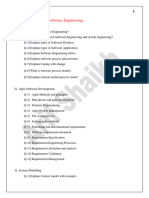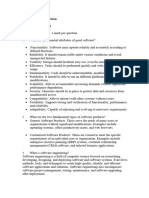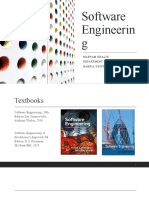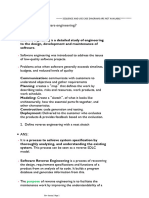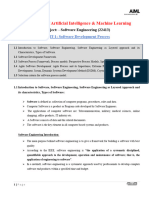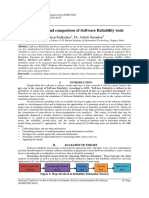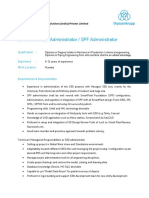0% found this document useful (0 votes)
19 views9 pagesSoftware Eng Assignment
The document contains the answers to various questions about software engineering provided by Aaditya Singh. It discusses the evolving role of software including pervasiveness, digital transformation, integration of emerging technologies, cloud computing, agile development, user-centric design, automation and efficiency, cybersecurity emphasis, continuous updates, and collaborative development. It also provides examples of how software changes from day to day and discusses common software myths. The document outlines software development problems and disadvantages. It further explains software engineering according to IEEE standards and principles of software engineering. Finally, it discusses the elements of the software process and justifies how hardware characteristics differ from software characteristics.
Uploaded by
Ashok Kumar SinghCopyright
© © All Rights Reserved
We take content rights seriously. If you suspect this is your content, claim it here.
Available Formats
Download as DOCX, PDF, TXT or read online on Scribd
0% found this document useful (0 votes)
19 views9 pagesSoftware Eng Assignment
The document contains the answers to various questions about software engineering provided by Aaditya Singh. It discusses the evolving role of software including pervasiveness, digital transformation, integration of emerging technologies, cloud computing, agile development, user-centric design, automation and efficiency, cybersecurity emphasis, continuous updates, and collaborative development. It also provides examples of how software changes from day to day and discusses common software myths. The document outlines software development problems and disadvantages. It further explains software engineering according to IEEE standards and principles of software engineering. Finally, it discusses the elements of the software process and justifies how hardware characteristics differ from software characteristics.
Uploaded by
Ashok Kumar SinghCopyright
© © All Rights Reserved
We take content rights seriously. If you suspect this is your content, claim it here.
Available Formats
Download as DOCX, PDF, TXT or read online on Scribd
/ 9

